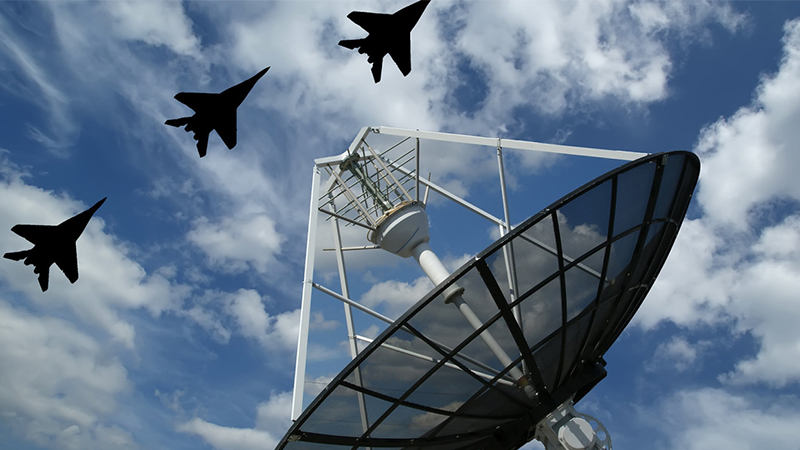

Radar is arguably one of the most significant advances made in the last century of warfare. Without it, we wouldn’t have accurate threat detection, workable missiles and flight control systems, or even decent weather prediction.
Despite being a standardised technology, radar is just as important in modern warfare as it was in WW2. Below, we’ll look at how it’s changed and what this means for the future of radar innovation.
The origins of radar come from experiments in 1886 by Heinrich Hertz. Although the feasibility of using radio waves to detect objects was tested in the early 20th century, it wasn’t until World War II that radar really took off as a viable military system. Its accuracy was greatly improved during the war, and its range of applications vastly increased.
At the most basic level, radar consists of electromagnetic waves sent from a transmitter. Sent as small pulses, they eventually hit an object and part of the wave is reflected back to a receiver. The larger the object, the more of the signal is sent back to the receiver. It then uses this information to translate the size and distance of the object into video or other formats.
The Doppler effect can be used to measure the movement of an object in relation to the radar transmitter. It detects the phase shift between the pulse transmission and reception, which it can convert into usable information. In other situations, the Doppler effect can negatively impact radar performance, leading to signal cancellation and degradation.
It ultimately depends on whether the radar system is active or passive. Active radar has the transmitter and the receiver in the same place, whereas passive radar has them in different locations. We can further divide active radar into primary and secondary. Primary radar is “traditional” radar that detects and localises targets, whereas secondary radar requires the target to have its own transponder. As such, it’s used in applications such as air traffic control.
Radar can be used for detection systems and situational awareness in combat scenarios. The basics of detection systems have remained relatively consistent, although advancements in phased-array antennae and stealth detection have led to more accurate systems.
Stealth aircraft presents an interesting example of radar advancements. Unsurprisingly, they were developed to avoid detection by radar, allowing them to get closer to their targets. However, they can still be spotted using low-frequency radar, as the longer wavelengths are capable of reflecting off the aircraft. However, they can’t provide enough information to lock on to the aircraft or guide missiles.
The cognitive radar system is one of the more exciting developments in modern warfare. It relies on the principles of human cognition – it senses the environment, learns about the target, and adapts its waveform to suit its mission and goal. These complex systems have great potential for adaptability in target detection and identification.
Militaries have always been quick to identify and exploit the limitations of radar. Stealth aircraft, for example, rely on anything from signal attenuation and interference to jamming or any combination of these. Like any other electromagnetic signal, radar can be exploited with relative ease.
But this is part of what makes it so fascinating as a military technology. We’ve understood the fundamentals for more than a century but are still finding ways to make it more accurate to overcome increasingly complex exploits. We can only imagine what the future of radar will look like in a hundred years as a result.
